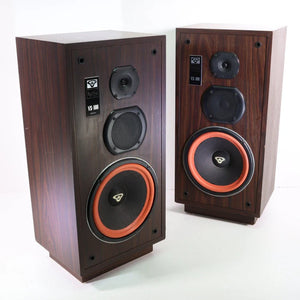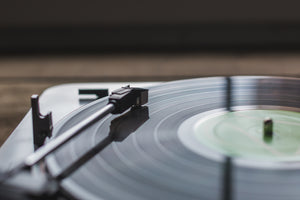We are unable to reply to comments, so please message us directly if you have a specific question regarding products, shipping costs, etc. Our office number is (480) 207-1511. Our email is hello@spencertified.com. You can also message us on Facebook. Commonly asked questions and answers can be found on our FAQs page here.

The Pioneer QX-949A Vintage 4-Channel Receiver | Classic Receivers at Their Best
THE QX-949A IS ONE OF PIONEER’S MOST CHERISHED QUADRAPHONIC RECEIVERS.
Many of Pioneer’s classic receivers are drool-worthy, and the QX-949A is no exception.
Introduced in 1973, this receiver is gorgeous with its vintage wooden panels and silver face. Built like a tank, this system boasts 40 watts per channel into 8 ohms, weighs a whopping 50 pounds, and measures 21.66 inches wide by 6.3 inches tall by 17.3 inches deep, making it one of their larger quadraphonic receivers.
But let’s take a look at why Pioneer’s QX-949A is more than just a pretty face.
HOW DID THE QX-949A IMPROVE OVER ITS PREDECESSOR, THE QA-949?
There are two noteworthy upgrades that the QX-949A made.
First, the QX-949A debuted with an upgraded "full logic" SQ decoder, providing a vast improvement in stereo separation from side to side and front to back on SQ source material.
Second, the heat vents on the top towards the back of the receiver were expanded all the way to the back end, resulting in better heat dissipation.
THE FRONT PANEL

The number of knobs and buttons on the front panel is enough to make any knob twirler’s fingers tingle. Yet the controls don’t feel cluttered: this system artfully combines use with beauty, so you are given as many controls as you need to operate its features without the panel feeling disjointed.
The four-channel level indicator is an eye-catching feature in and of itself. This illuminated meter shows any adjustments made when listening to a 4-channel audio source. This makes for a quick and easy one-glance comparison to directly view the levels of both the front and rear speakers.
The tuner portion of this system features an excellent AM section, a linear FM dial scale and tuning meter, an all-important FM muting switching, a high-performance multiplex integrated circuit, and a local oscillator with buffer circuit that’s unique to the QX-949A. If nothing else, the great sensitivity and selectivity afforded by the tuner section of this system makes it a star performer.
THE BACK PANEL

On the back of the QX-949A, you have a range of connectivity options, including not one but two phono hookups for your turntable, AM and FM antenna connections, an AM ferrite antenna, an FM de-emphasis switch, three AC outlets (one switched and two unswitched), Dolby adaptor connections, a 2-channel power boosting switch, an auxiliary hookup, connections for two tape recorders, and connections for two sets of quad speakers.
This makes the system perfect for connecting a CD player and as many as two tape recorders (which is great for easily duplicated tapes or creating two recordings at once). Plus, with one switched and two unswitched power connections, you can use it to power the rest of your system. Switched means that the power is controlled by the receiver while unswitched will continue to receive power even if the receiver is turned off.
IN SUMMARY
The QX-949A is a 4-channel stereo receiver that supports operation with both traditional 2-channel and 4-channel audio sources. Epitomizing Pioneer's commitment to excellence in receiver creation, it offers four channels of clear, powerful sound amplification, a high-quality tuner with a CD-4 demodulator and matrix decoders for both SQ and RM, and room for more than a few other necessary components. With 40 watts per channel into 8 ohms for four channels and 60 watts per channel stereo, you get plenty of punch. It’s an exemplary piece of equipment that reminds us why vintage receivers deserve to remain on our shelves as the centerpiece of our home audio systems.
If you’re interested in owning this beautiful system or learning more about it, you can check it out here:



Comments
Leave a comment